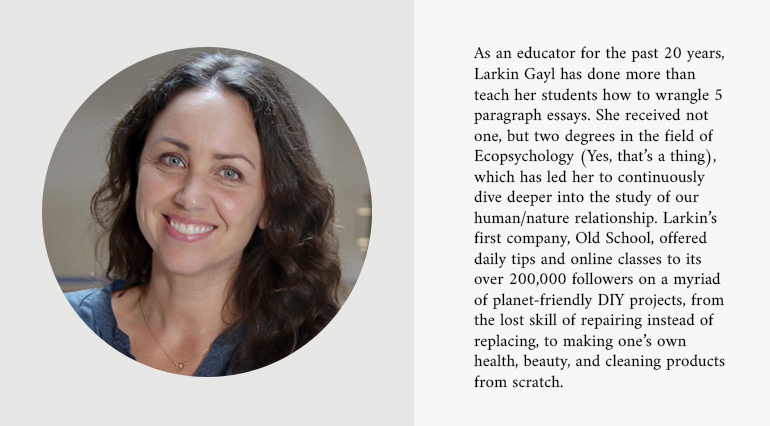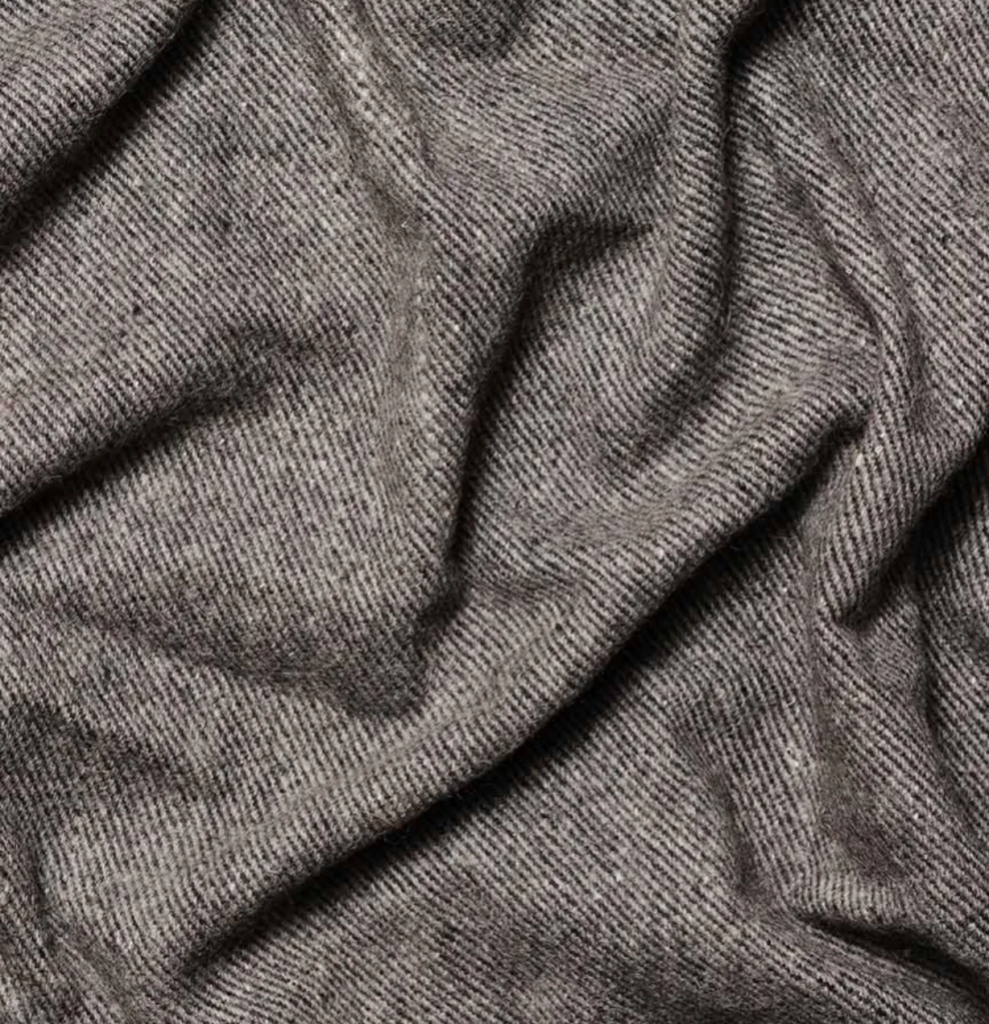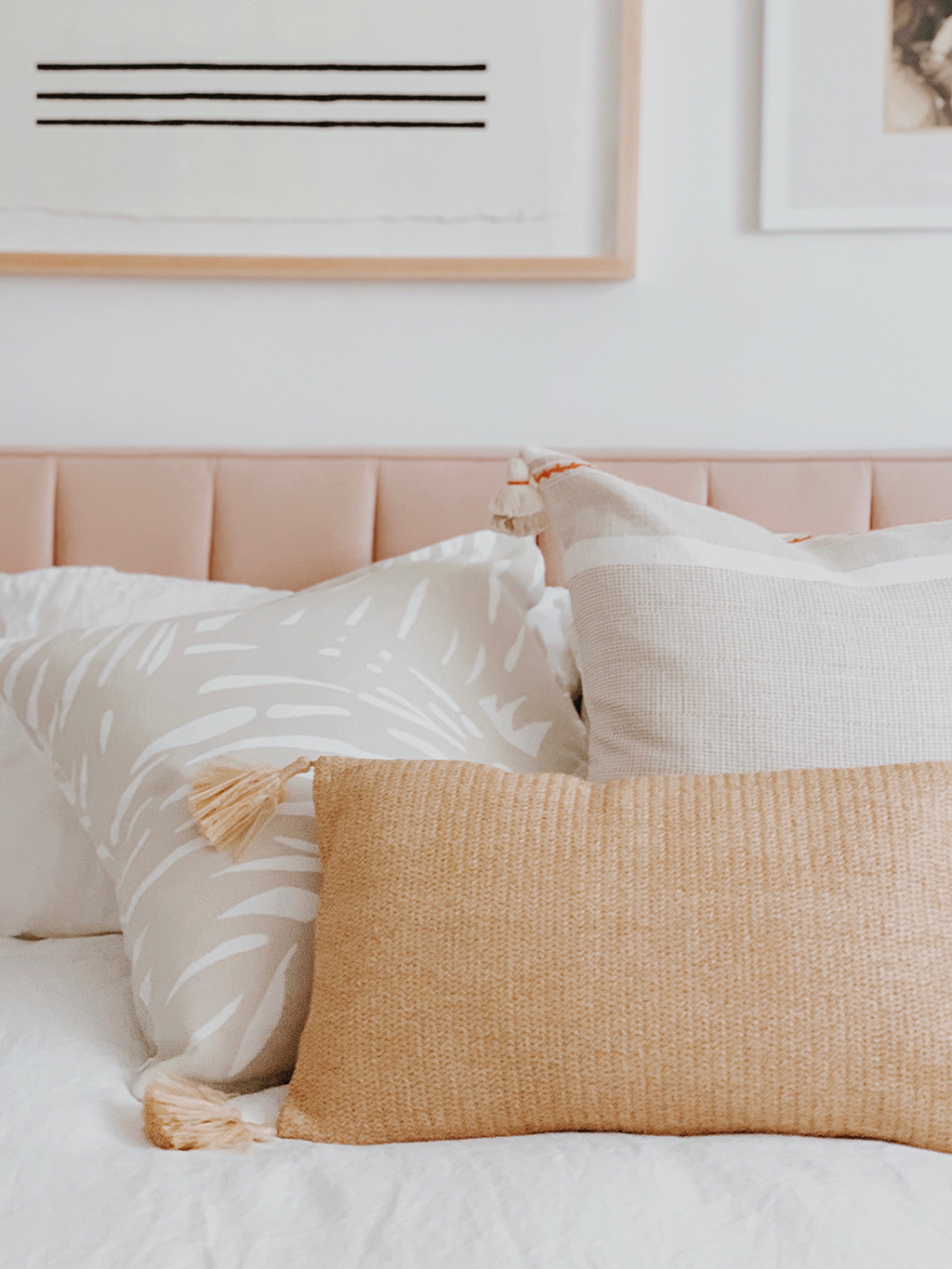
Today I am so happy to introduce another post in our sustainability series with Larkin Gayl of Unfettered Home. We’re talking all about the bedroom this month and she’s introducing a topic that’s near and dear to my heart: Knowing your materials. I talk a lot about the importance of knowing your materials as a way to make smarter choices and keep clutter at bay. Today, she’s educating us about some of the common fabric choices we bring into our bedroom and the difference between synthetic vs natural fabrics. Take it away Larkin!
Your Sustainable Bedroom: Synthetic vs. Natural fabrics
by Larkin Gayl
Whether you wear it on your body, wrap yourself in it as you sleep, or decorate your home with it, fabric is part of, well, the fabric of our lives.
These days you can find just about anything you want when it comes to textiles – pleather that could beat the real thing in its look and feel, fabrics that are silkier than silk, and fake fur so soft you thought it was genuine, but unless it grew from the earth or was once part of an animal, it’s synthetic.
What are synthetic fabrics exactly?
Technically, “synthetic” means something that is made with chemicals to mimic a natural product. We have synthetic medicines that are based on natural remedies, synthetic fuels made from industrial byproducts instead of virgin fossil fuels, and synthetic fabrics, which look and feel a lot like their natural counterparts and rule the fashion and home decor world today.
Some commonly found synthetic fabrics include:
- Nylon
- Polyester
- Acrylic
- Spandex
- Acetate
- Microfiber
- Pleather or “PU Leather”
So what’s so bad about Synthetic Fabrics?
The ingredients used in making synthetic fibers are commonly produced from petroleum, which is a non-renewable resource, meaning, once it’s gone, it’s gone.
Not only that but the process of making it is carbon-intensive and leads to all the stuff you hear about in the news: climate change, rising sea levels, ocean pollution, extreme weather… you catch my drift. Plus, every time you wash synthetic fabrics, teeny tiny plastic microfibers release into the water, eventually finding their way into the ocean. And no one wants any more plastic in our oceans.
Granted, there is a time and place for synthetic fibers. They are great for outdoor cushions and umbrellas, as they stand up well to the elements. And where would we be in the great outdoors without our fleece jackets, waterproof snow pants and rip-stop nylon tents? And let’s not forget the ubiquitous high-waisted yoga pants that hold everything in just perfectly. We need this stuff sometimes, but definitely not as much as we think.
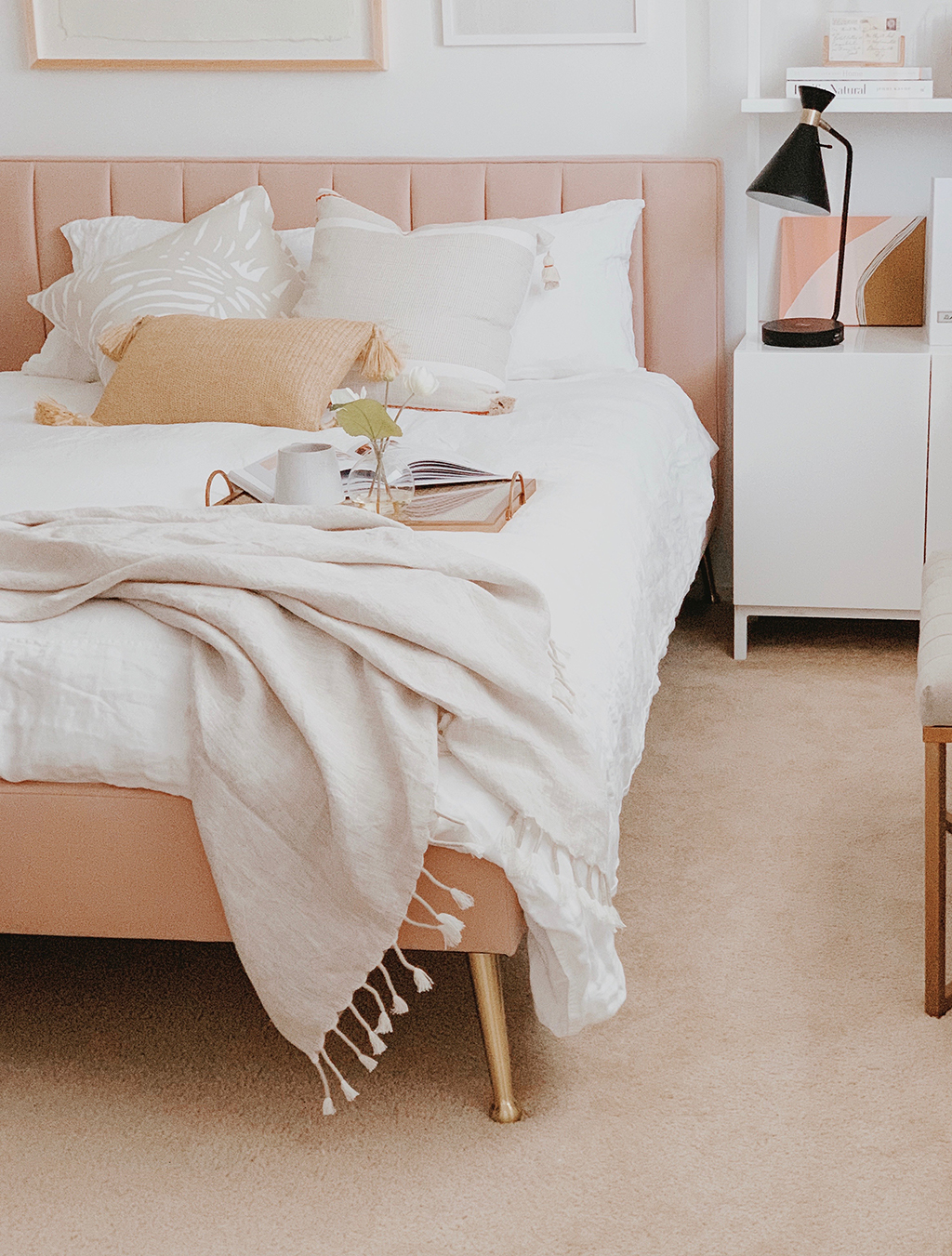
So what can we do about it?
The good news is that there are fabrics that have been made for hundreds, if not thousands of years, that are kind to the planet, lovely to look at and wear, can be carbon-neutral and biodegradable, and often have the added bonuses of being moisture-wicking, insulating, and even antimicrobial.
Enter natural fibers.
To put it simply, natural fibers are grown, whether from the earth or on an animal’s body. They are renewable, meaning we can keep producing them over and over again without running out. As long as they haven’t been mixed with synthetic fibers, they are also biodegradable at the end of their life cycles.
Some common natural fibers include:
Cotton
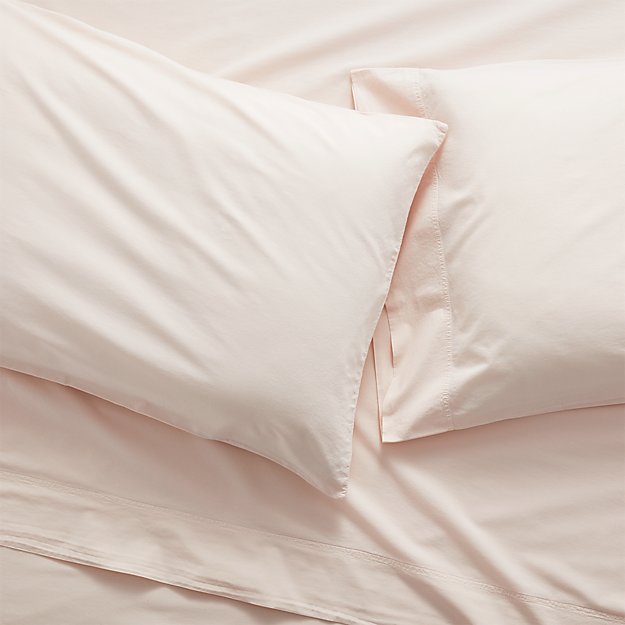
This favorite natural fiber comes from the beautifully-fluffy cotton plant. It grows in warmer climates around the world and is the most commonly used natural fiber of all. Towels, sheets, blankets, pillows, curtains, rugs, and table linens are often made of cotton or a blend of cotton and synthetic fiber. It’s soft, breathable, and feels great against the skin.
Sustainably speaking, cotton requires a LOT of water (requiring over 700 gallons of water to produce a single T-shirt!) and pesticides to grow, so best choose organic (no pesticides or GMOs) or “sustainable cotton,” which has been approved by the BCI (Better Cotton Initiative).
.
Linen
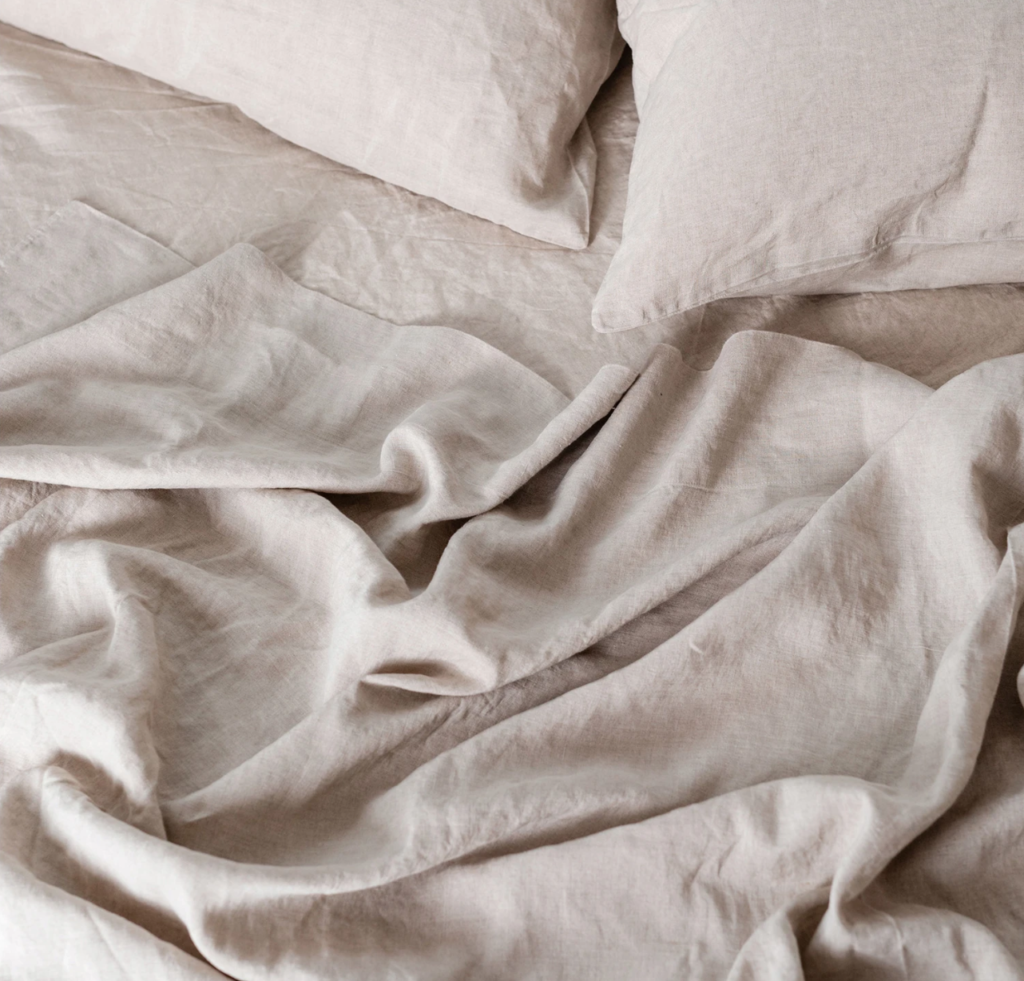
Made from the fibers of the flax plant, linen holds and releases water quickly and is naturally antibacterial, so it’s great for bedsheets and warm-weather clothing. It gets softer the more it is washed, but you can find pre-washed linen if you choose. Linen lasts much longer than cotton and often can be passed down generation to generation.
Sustainably speaking, Flax is not water-intensive to grow and the whole plant can be used for fibers, therefore creating less waste. As with all-natural fibers, your best choice for the environment is organic.
.
Hemp
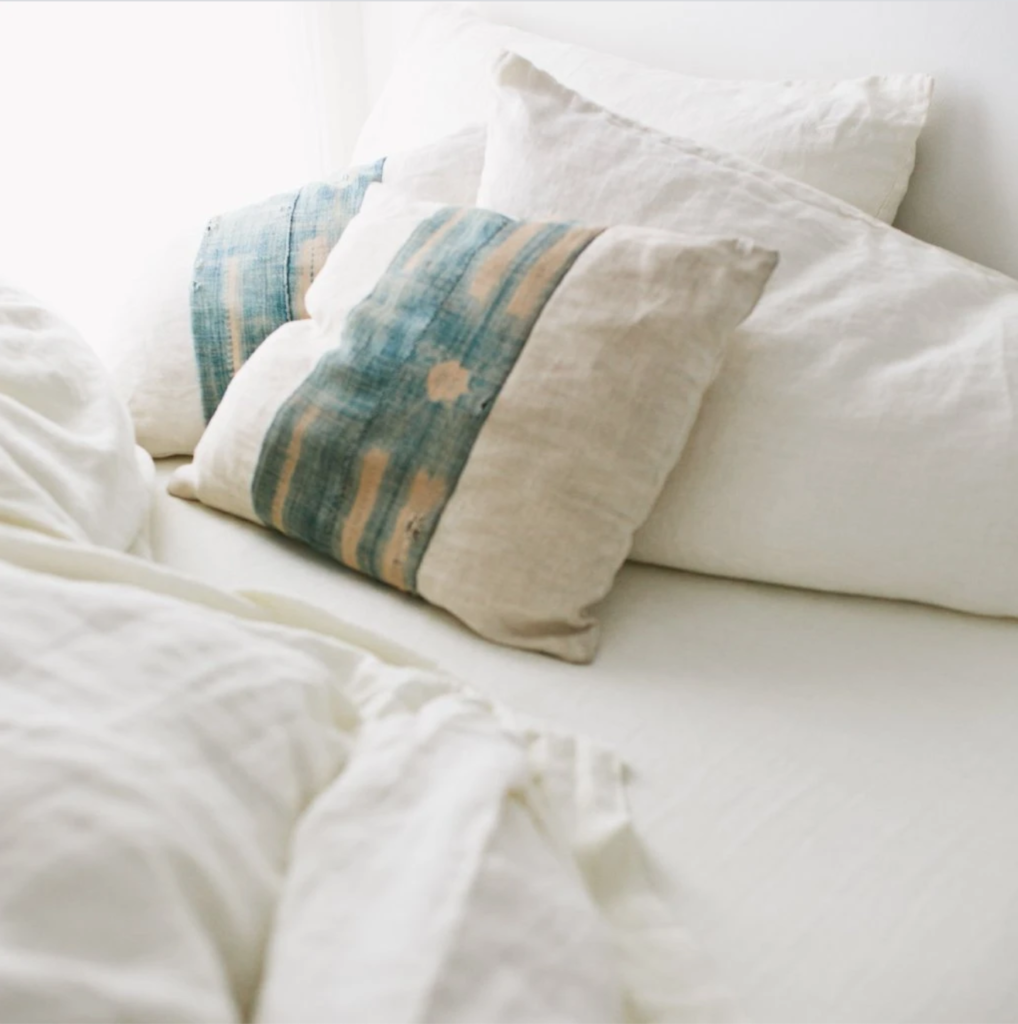
This non-psychoactive cousin of the cannabis plant has been used for thousands of years to make everything from rope to canvas sails to banknotes to clothing. Like linen, it softens the more it’s laundered.
Sustainably speaking, this genius of the plant world grows quickly, fertilizes its own soil, and sequesters carbon, meaning it draws carbon dioxide back into the soil where it belongs. Again, choosing organic is better, but even non-organic crops use way fewer pesticides than cotton, which uses 11% of total pesticides globally.
Bamboo
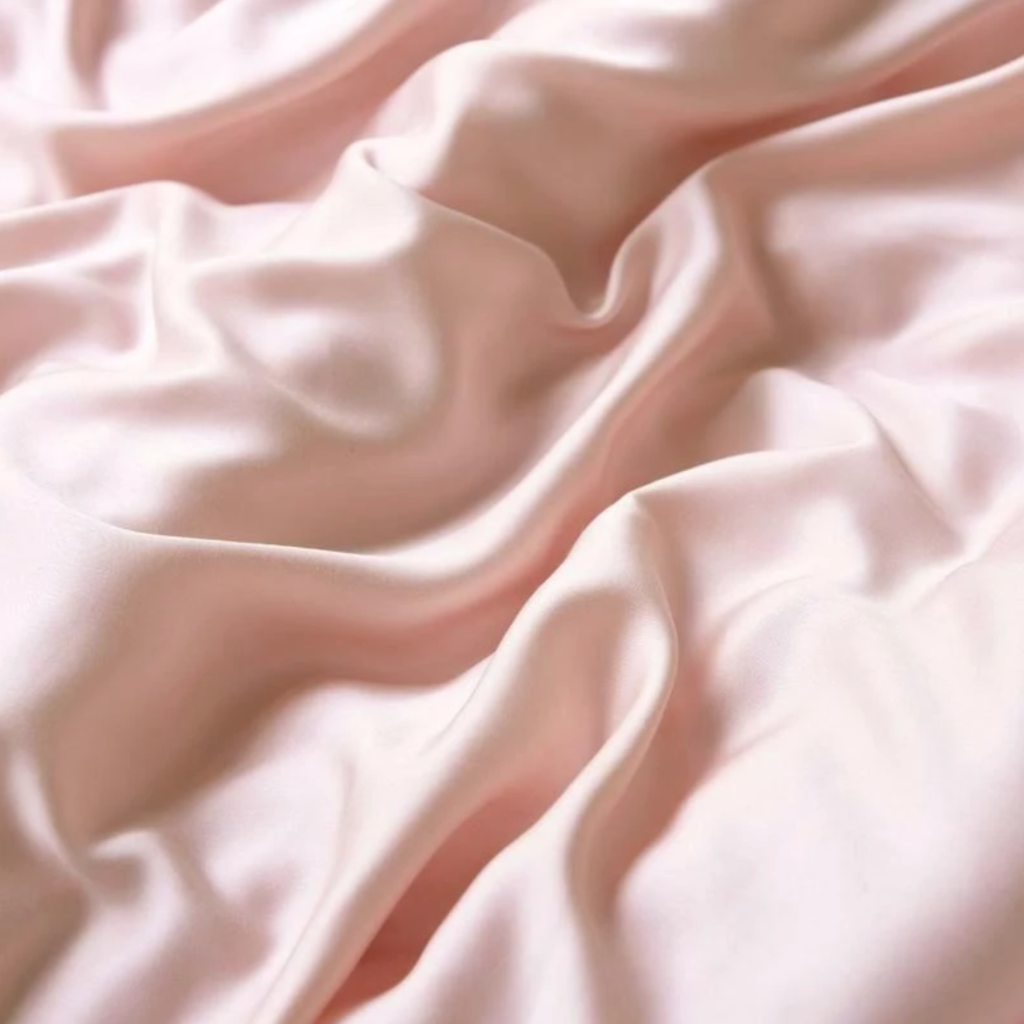
You’ve likely felt the silky-soft bamboo fabric commonly found in intimate wear and bedsheets. It feels a lot like rayon, and that’s because it is. Rayon is made by softening plant material through a chemical process that renders a pulp that can then be spun into fibers. This can be done with wood pulp (as with Lyocell or TENCEL, Viscose, Modal), or bamboo.
Sustainably Speaking, bamboo grows quickly, uses much less water and pesticides than other crops, and replants itself through its roots. If processed into bamboo linen, which is labor-intensive and hard to find, the environmental footprint is on the smaller side, but when made into bamboo rayon, the more common variation, more chemicals are used and the footprint gets larger.
Wool
We often think of wool as being shorn from a sheep, but can be gathered from other animals, such as llamas, alpacas, rabbits, goats, and camels. It’s breathable, insulating, stands up to stains, and lanolin, which covers the fibers of sheep’s wool, naturally repels mold, mildew, and bacteria.
Sustainably Speaking, Wool grows back year after year, which makes it renewable. It’s biodegradable, unlike synthetic fabrics that will sit in the landfill for no-one-knows-how-long. Animal welfare should be considered in sourcing your wool. Look for companies that confirm the fair treatment of animals and the land they are raised on.
Silk
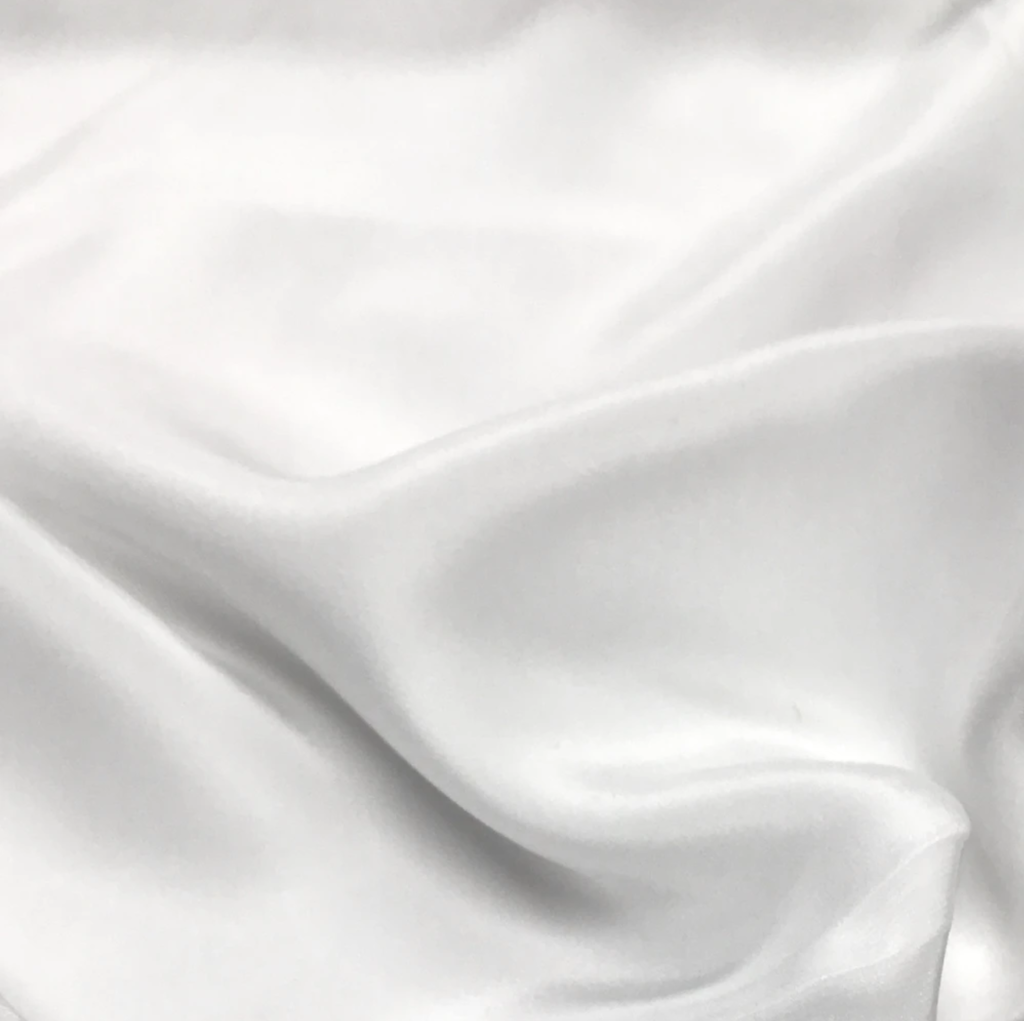
This lustrous, breathable fabric is a wonder of its own, as it helps regulate body temperature in hot or cold weather and repels allergens like dust mites and fungus. Anyone who’s slept on a silk pillowcase knows the feeling of pure luxury.
Sustainably speaking, silk production is not without its impact. Silk fibers are made from unraveling the strands of a silkworm cocoon. This sounds innocuous enough, but sadly, the cocoon has to be boiled in order to release the fibers for spinning, killing the resident larvae in the process. One option is to look for Ahimsa or “peace” silks, which process the cocoons only after the silkworms have completed metamorphosis.
So what’s the most sustainable way to buy fabrics?
Vivienne Westwood said it best: Buy less. choose well. Make it last.
We live in a world where we’ve been taught that more is better than less and new is better than used. Changing this mindset is the first thing we must do as conscious consumers.
When looking for fabrics to decorate your home or wear on your body, follow these tips:
- Buy second hand
As with the majority of purchases, the most sustainable way to go is second hand. If you can find what you’re looking for pre-loved, then you are using NO resources to make the product, as it’s already been made.
Vintage and Antique stores, furniture consignment shops, eBay and other online platforms like Poshmark, Letgo and Mercari are great places to find used clothing and home fabrics, including pillow covers, curtains, and even bedroom and table linens.
- Buy recycled
Support companies who use recycled content in their products or repurpose old items into new ones.
- Buy organic
I said it before and I’ll say it again: nixing pesticides, herbicides, and GMOs is a good thing.
- Buy high quality
If you’d rather buy new, be sure to find something of high quality. Ask yourself: Is it durable? Can I repair it if it breaks? Could I pass it onto my children or another family when I’m done with it? The more durable something is, the less likely you will need to replace it. Longevity is a form of sustainability.
Simplifying and styling your space is an ongoing process filled with all kinds of creative decisions. With a little research and forethought, you can choose to decorate with natural fabrics instead of synthetics to turn your home into an oasis of chemical and plastic-free goodness.
